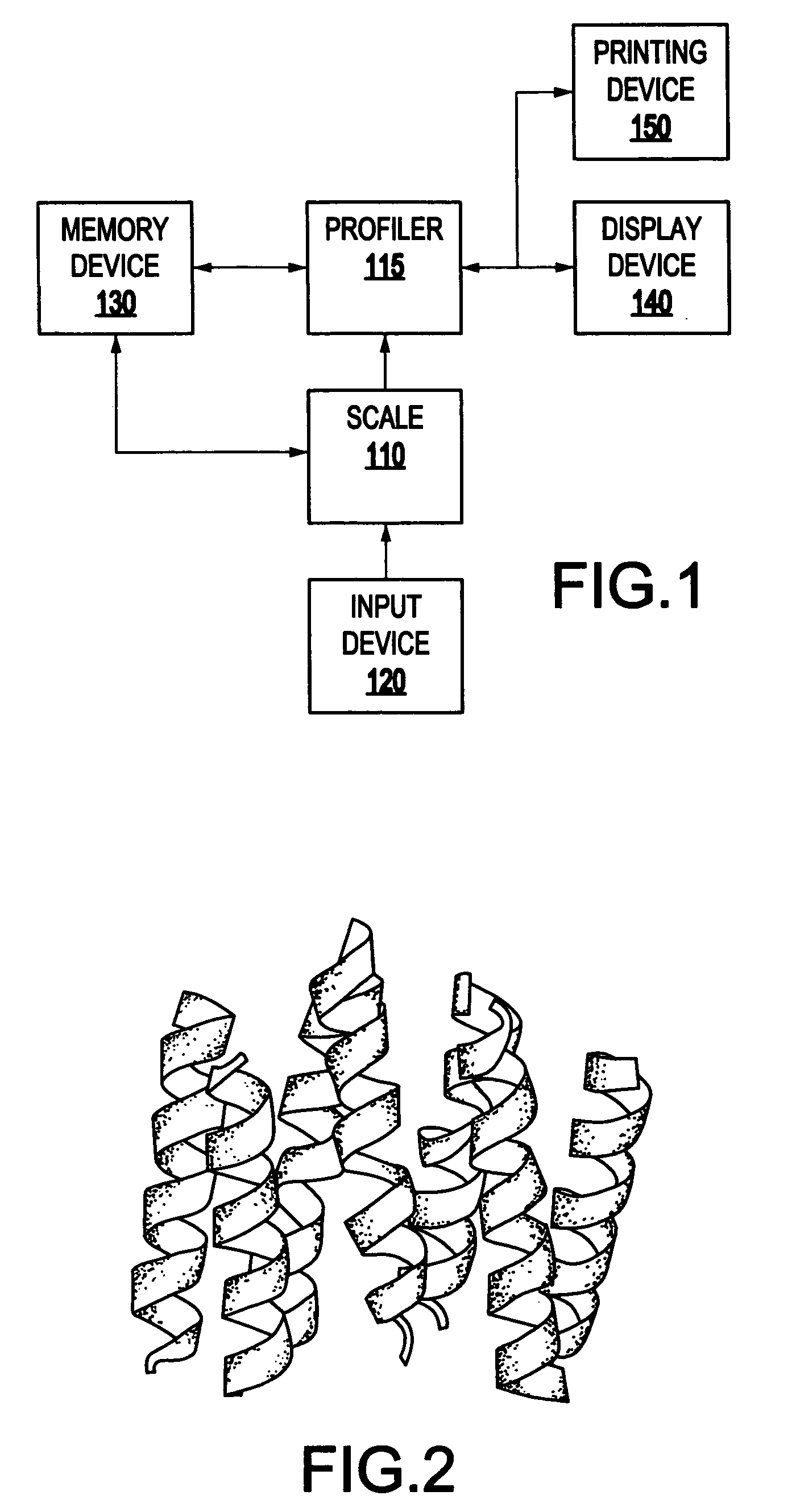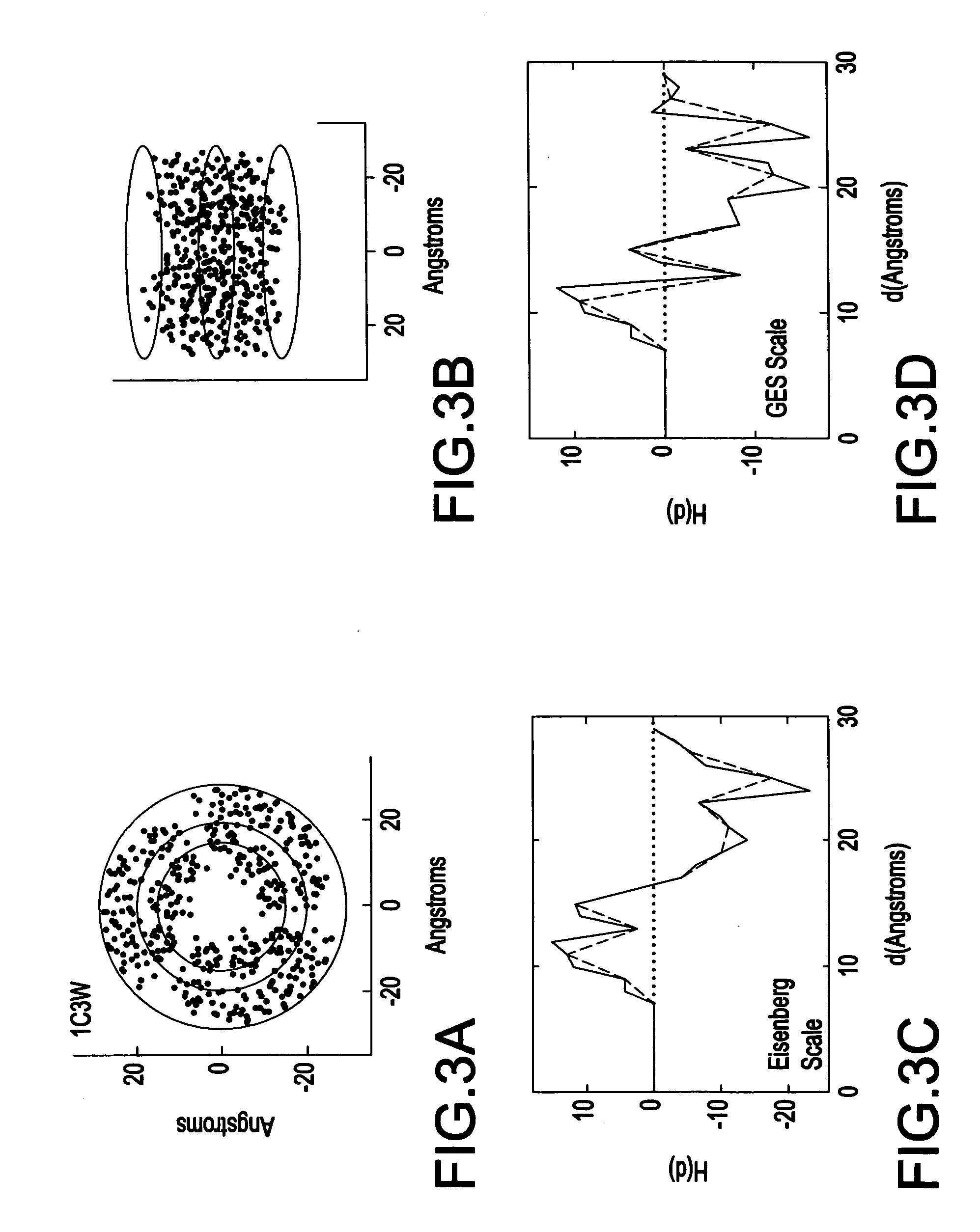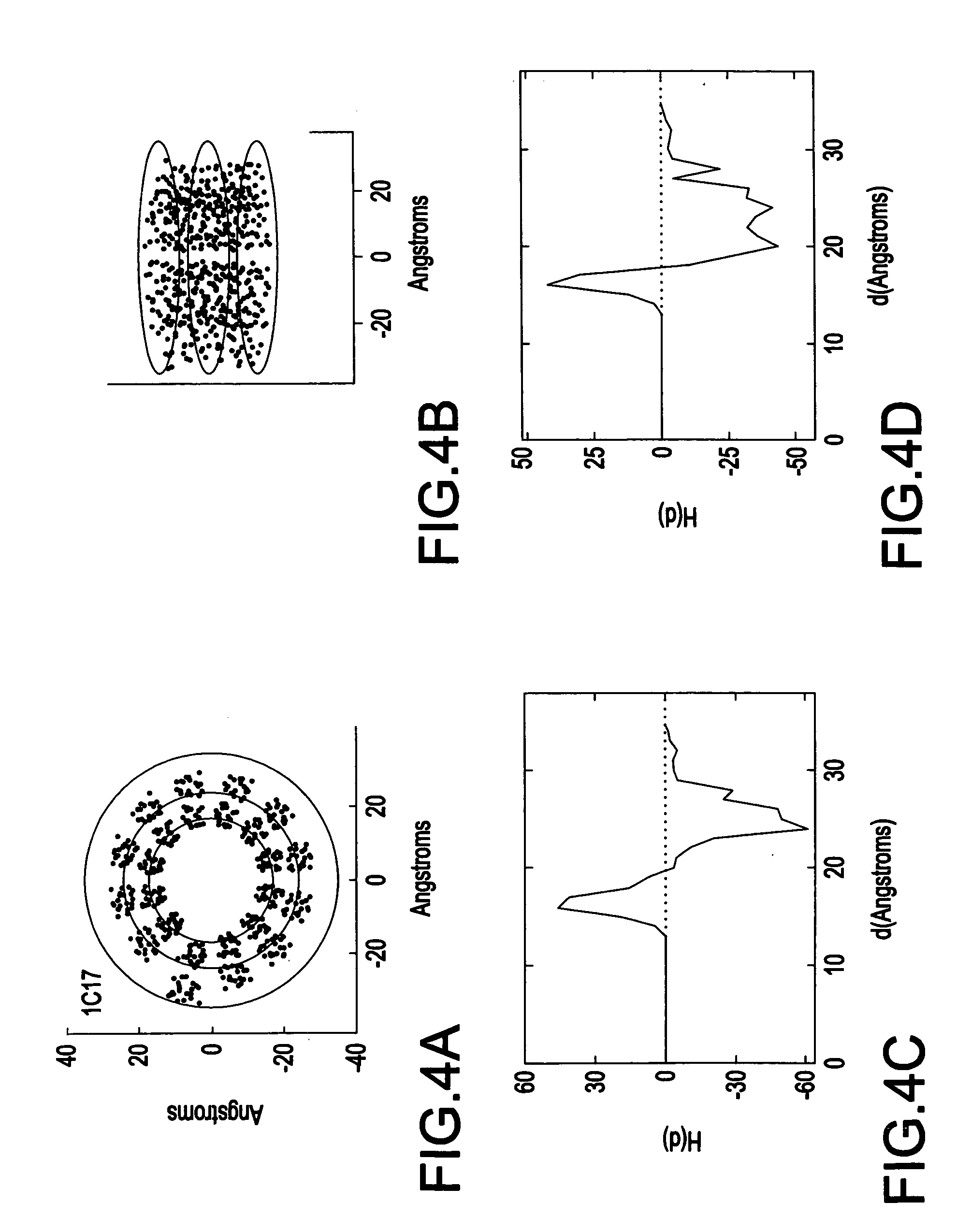System and method for spatially profiling a distribution of hydrophobicity of a transmembrane protein
a transmembrane protein and hydrophobicity technology, applied in the field of system and method for spatial profiling of can solve the problems of inability to determine the hydrophobicity distribution of transmembrane proteins in the interior of the structure, the “inside-out” model of membrane protein structure no longer accepted, and the inability of conventional systems and methods to profile the hydrophobicity distribution of transmembrane proteins
- Summary
- Abstract
- Description
- Claims
- Application Information
AI Technical Summary
Benefits of technology
Problems solved by technology
Method used
Image
Examples
Embodiment Construction
[0046] Referring now to the drawings, FIG. 1 illustrates a system 100 for spatially profiling the distribution of hydrophobicity of transmembrane proteins. As shown in FIG. 1, the system 100 includes a scaler 110 which generates scaled hydrophobicity values for the transmembrane protein, and a profiler 115 which spatially profiles a hydrophobicity distribution for the transmembrane protein based on the scaled hydrophobicity values (e.g., shifted and scaled hydrophobicity values) the transmembrane protein.
[0047] The system 100 may also include an input device 120 for inputting data (e.g., structural data) pertaining to the transmembrane protein. The system 100 may also include a memory device 130 (e.g., database) for storing data used by the system 100, and data generated by the system 100. The system 100 may also include a display device 140 which may be used to display the results of the calculations performed by the processor 110, and a printing device 150 which may be used to pr...
PUM
 Login to View More
Login to View More Abstract
Description
Claims
Application Information
 Login to View More
Login to View More - R&D
- Intellectual Property
- Life Sciences
- Materials
- Tech Scout
- Unparalleled Data Quality
- Higher Quality Content
- 60% Fewer Hallucinations
Browse by: Latest US Patents, China's latest patents, Technical Efficacy Thesaurus, Application Domain, Technology Topic, Popular Technical Reports.
© 2025 PatSnap. All rights reserved.Legal|Privacy policy|Modern Slavery Act Transparency Statement|Sitemap|About US| Contact US: help@patsnap.com



